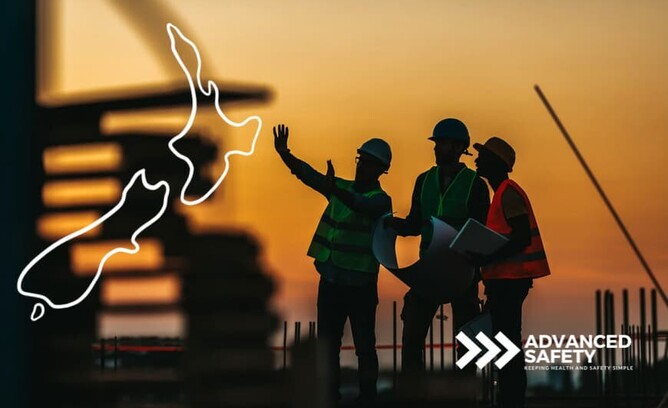Workplace safety is a cornerstone of business success, protecting the well-being of employees and ensuring operational continuity. In New Zealand, WorkSafe NZ is at the forefront of promoting and enforcing workplace safety standards.
By understanding WorkSafe’s mission and implementing its guidelines, businesses can foster a culture of safety that benefits employees and drives success.
Why Workplace Safety Matters
The Impact of Workplace Accidents
Workplace accidents have far-reaching consequences. Beyond the immediate harm to employees, accidents can lead to:
Financial Losses: Increased insurance premiums, compensation claims, and legal costs.
Productivity Declines: Injuries can result in downtime and project delays.
Reputation Damage: Non-compliance with safety standards can harm client trust.
A commitment to workplace safety not only prevents these setbacks but also creates a more engaged and loyal workforce.
The Benefits of a Safe Work Environment
A safe workplace is a productive workplace. Prioritising safety offers several advantages, including:
Employee Retention: Workers are more likely to stay with employers who value their well-being.
Enhanced Morale: A safe environment fosters trust and confidence.
Cost Efficiency: Fewer accidents mean lower costs related to medical claims and downtime.
Want to Improve Your Workplace Safety?
Contact Advanced Safety for expert guidance and support.
Contact Us TodayWorkSafe New Zealand: Championing Safety
Mission and Vision
WorkSafe NZ is the regulatory authority dedicated to ensuring the health and safety of workers. Their vision is simple yet profound: every worker should return home safe and healthy at the end of the day.
Through a mix of education, guidance, and enforcement, WorkSafe NZ collaborates with businesses to reduce workplace injuries and fatalities.
The Health and Safety at Work Act 2015
The Health and Safety at Work Act (HSWA) 2015 serves as the foundation for workplace safety in New Zealand. Key provisions include:
Duty of Care: Businesses must take all practicable steps to ensure workplace safety.
Worker Participation: Employees are encouraged to actively contribute to safety initiatives.
Accountability: Non-compliance may result in penalties, including fines or operational prohibitions.
WorkSafe’s inspectors actively monitor compliance, offering support while holding businesses accountable for maintaining high safety standards.
Implementing WorkSafe Guidelines
Key Guidelines for Industries
WorkSafe NZ provides industry-specific guidance, addressing unique hazards in sectors like construction, manufacturing, and project management. Examples include:
Construction: Emphasis on fall prevention, machinery safety, and proper use of personal protective equipment (PPE).
Manufacturing: Focus on ergonomics, hazardous substance handling, and machinery safeguarding.
Project Management: Stress on risk assessment, contractor safety protocols, and emergency planning.
Compliance Process
Achieving compliance with WorkSafe’s guidelines involves:
Risk Identification: Conduct regular assessments to spot potential hazards.
Implementation of Controls: Use engineering solutions, administrative controls, and PPE to mitigate risks.
Training and Awareness: Ensure all employees are informed about workplace hazards and safe practices.
Monitoring and Review: Regularly audit safety measures and refine them as needed.
Learn more about risk management with Hazard Notice Boards on Construction Sites.
Building a Culture of Safety
Training and Education
Effective training empowers employees to act confidently in preventing and managing risks. Key training elements include:
Induction Programs: Familiarising new hires with safety protocols.
Ongoing Education: Refreshing knowledge on safety procedures and emerging risks.
Emergency Drills: Preparing teams for potential crises like fires or evacuations.
Encouraging Worker Participation
Involving employees in safety decision-making fosters accountability. Ways to engage workers include:
Hazard Reporting Systems: Make it easy for employees to flag potential dangers.
Safety Committees: Form cross-functional teams to discuss and improve safety measures.
Recognition Programs: Reward employees for outstanding safety contributions.
Continual Improvement
Safety isn’t static; it evolves with workplaces. Businesses should:
Regularly Review Policies: Ensure they align with the latest industry standards.
Analyse Incidents: Use data from near-misses and accidents to implement preventive measures.
Adopt Technology: Use tools like safety management systems to centralise documentation and streamline inspections.
Explore how technology aligns with safety best practices in ISO 45001 in Construction New Zealand.
Monitoring and Enforcement
WorkSafe’s Role
WorkSafe inspectors perform regular site visits, focusing on compliance and hazard mitigation. They provide:
Guidance: Offering advice to improve safety practices.
Accountability: Issuing notices for non-compliance.
Consequences of Non-Compliance
Ignoring safety standards can lead to:
Fines and Penalties: Legal repercussions for failing to meet HSWA standards.
Operational Shutdowns: Work halts until compliance is achieved.
Conclusion
Safe work environments are essential for New Zealand businesses aiming to protect their workforce, enhance productivity, and comply with regulations. By aligning with WorkSafe NZ’s guidelines, companies can foster a culture where safety is integral to success.
Need help implementing safety measures? Contact Advanced Safety today to ensure your workplace thrives with safety at its core.
Client Success Stories
Discover how Advanced Safety has made a difference for businesses like yours.
Read More
